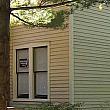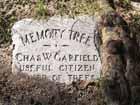Charles W. Garfield's Concern for Others
by Mary Emily Schroeder
It was his concern for the welfare of boys and girls, no doubt, that prompted him to push the "park and playground movement." He was, indeed, the pioneer of the project of a "playground within 1/4 mile of each child," and his gift of the Burton Street acreage, between Madison and Jefferson Drive, which became Garfield—Fletcher Park was indicative of this. Its acres at Burton and Madison were given by Mr. and Mrs. Garfield and Mrs. Julia Simonds Fletcher, Mr. Garfield's cousin. Next came the adjoining eight acres, the present "picnic grove," and then, the six acres of Burton Woods. In about 1931, he donated a plot on Blaine Avenue, as a pre-school, or kindergarten playground, hoping this would start a series of "juvenile play areas"—all done out of the goodness of his heart and his desire to do something for children. Speaking of children, Charles and Jesse had no children.
His concern for others was probably what led to another one of his many innovations, his weekly talks to his bank employees. This was something new for a bank president to do, but Mr. Garfield was no ordinary bank president; just like he was no ordinary man, and probably right about here we ought to give a few bank "details." This was the Grand Rapids Savings Bank, of course, which his father (Samuel M.) had helped organize in 1870. In 1886, Mr. Garfield himself became a Director. In 1893, he was elected President, and would hold that office until August 1912, when he became Chairman of the Board, with William Alden Smith as President. In 1917, he became Chairman of the Executive committee.
Excerpted from The Charles W. Garfield Story by Mary Emily Schroeder (available at the Grand Rapids Public Library)

 facebook
facebook




